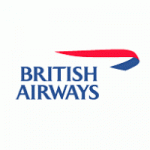
British Airways 7Ps of marketing integrates important elements of the marketing mix that need to be addressed by marketing managers taking into account taking into account the characteristics of the target customer segment. The most important elements of the marketing mix that consists of product, place, price, promotion, process, people and physical evidence. In January 2015 British Airways announced that “will split its marketing department and bring the unit closer to its commercial operations as part of a major restructure”.[1] Product. British Airways offers airline services of a premium segment. A high level of service customization and the abundance of choice is one of the core advantages of the airline’s competitive advantage. For example, in the World Traveller cabin, customers can choose from a wide range of Taste of the Far East’, ‘Gourmet Dining’, ‘Taste of Britain’, ‘Great British Breakfast’, ‘Healthy Choice’ and ‘Vegetarian Kitchen’.[2] Moreover, the airline’s service provision is associated with a high level of digitization and an extensive integration of information technology. For example, in 2015 British Airways launched its app for the Apple watch. A simple swipe opens the British Airways app, which was re-designed to fit the Apple Watch screen. It then displays a summary of the customer’s next flight, the flight number, route, departure time, flight status, a countdown to the departure time and the weather at the destination.[3] Place. British Airways flies to more than 400 destinations worldwide and it has the greatest presence in Heathrow, Gatwick and London City airports. British Airways utilizes online sales channel to sell its tickets and air tickers can also be purchased offline via sales agents and other intermediaries. The range of sales support measures offered by the airline include the possibility to hold flights and the price for up to 72 hours after the booking. Price. British…
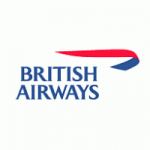
The acronym PESTEL stands for political, economic, social, technological, environmental and legal factors affecting businesses. Accordingly, British Airways PESTEL analysis involves an analysis of the impact of these external factors on the airline. Political Factors British Airways is a major international airline that flies to more than 400 destinations worldwide. Political stability and the perception of safety by the population is an important political factor that has a tremendous impact on British Airways. A stark illustration of this claim may refer to terrorist attacks at Brussels airport in March 2016, which caused the decline of IAG share price, British Airways’ parent company by 1.5 per cent[1]. Moreover, recently the airline found itself to be engaged in a political debate for demanding a third runway at Heathrow airport from the UK government. Specifically, “the boss of British Airways has warned he could seek to expand the airline overseas if the Government “twiddles its thumbs” over a third runway at Heathrow”[2] Generally, apart from political stability, a wide range of political factors affecting British Airways include the level of bureaucracy, the extent of corruption, home market lobbying activities, activities of trade unions and others. Activities of trade unions in particular have proved to be a major factor affecting the airline to a considerable extent during the past years. Economic Factors Certain economic factors such as the inflation rate, currency exchange rates and the overall economic climate in the UK has direct and important implications on British Airways performance. The cost of fuel is another significant economic factor for British Airways, since the Group used approximately 5.7 million tonnes of jet fuel in 2015 only.[3] For example, in 2015, British Airways expenses on fuel decreased by £484 million, or 13.8 per cent compared to the previous year despite the increasing scope of operations[4].…
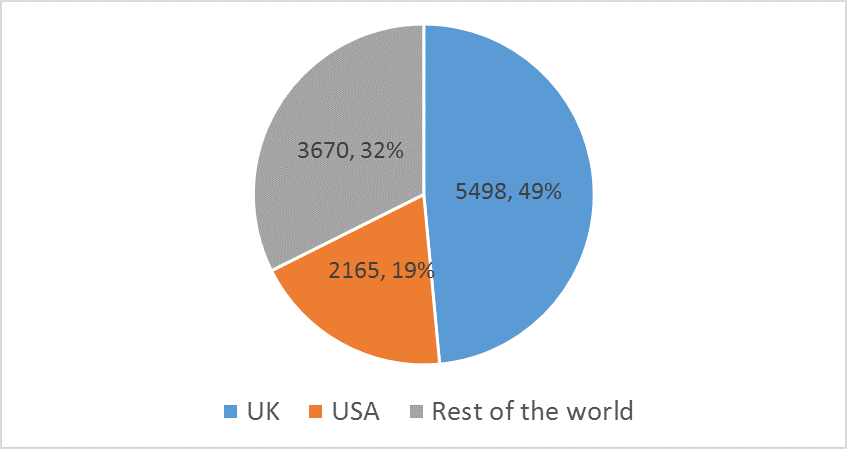
British Airways SWOT analysis is a strategic analytical tool that facilitates the analysis of strengths, weaknesses, opportunities and threats related to the business. The following table illustrates British Airways SWOT analysis: Strengths 1. Economies of scale due to its large size 2. Strong brand image 3. Market leadership in the UK 4. High level of service digitalization and effective integration of IT and internet Weaknesses 1. Overdependence on the UK market 2. Low return on invested capital (ROIC) 3. Constrained capacity of Heathrow airport 4. Lack of experience of the new CEO Alex Cruz in leading the premium segment airline Opportunities 1. Formation of strategic cooperation with other businesses in airline and catering industries 2. International market expansion 3. Benefiting from synergy via Closer integration between IAG’s operating airlines 4. Improving relations with unions Threats 1. Further intensification of competition 2. Terrorist attacks 3. Service distuptions due to employee strikes 4. Escalation of the conflict with the UK government British Airways SWOT analysis Strengths 1. British Airways flies to more than 400 destinations worldwide and its parent company International Airline Group (IAG) also owns Iberia, Vueling and Aer Lingus airlines. Thanks to the extensive scope of its operations, the business benefits from the economies of scale to a great extent. This benefit is used to further strengthen the airlines’s competitive advantage via investments in new advanced fleets and achieving a greater personalization of service provision. 2. The airline enjoys a strong brand image. In 2016 British Airways won both the Business and Consumer Superbrands awards for the second year running – the first company ever to do so. In 2015, British Airways was named by The Sunday Times and National Geographic named as best short-haul and long-haul airline. Moreover, Independent awarded British Airways the title of best European airline, while…

Organizational structure of a business determines the manners of which the primary objective of profit maximization is achieved. More specifically, organizational structure is the reflection of roles and tasks of employees and the scope of their contribution to the achievement of organizational objectives. British Airways is a part of International Airline Group (IAG). Along with British Airways, AIG also owns Iberia, Vueling and Aer Lingus and the airline group has the following structure: Figure 1 IAG management structure British Airways organizational structure was subjected to certain changes early in 2015. The company announced it would split its marketing team with part of the team joining the commercial department and the other forming a new customer experience team, which focuses solely on the travel experience.[1] Such a pattern of restructuring is a clear attempt to place marketing at the forefront of airline’s business strategy. The latest pattern of British Airways organizational structure before Alex Cruz took over as the new CEO from Keith Williams in April 2016 as illustrated in Figure 2 below: Figure 2 British Airways organizational structure It can be argued that British Airways organizational structure may be subjected to certain changes in the foreseeable future to reflect strategic changes to be introduced by the new CEO Alex Cruz. Specifically, “the consensus at IAG is that Cruz has done a good job at Barcelona-based Vueling, fending off budget rivals like Ryanair and EasyJet on routes around Europe”[2] and this is one of the reasons he has been appointed to lead British Airways. Accordingly, one can expect Alex Cruz will cost-cutting measures that may involve de-layering of British Airways organizational structure. British Airways Report comprises a comprehensive analysis of British Airways. The report illustrates the application of the major analytical strategic frameworks in business studies such as SWOT, PESTEL, Porter’s…
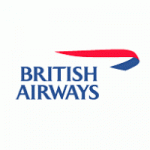
British Airways leadership reports to International Airline Group (IAG), its parent company that also owns Aer Lingus, Iberia and Vueling. The Leadership Team is made up of the Executive Directors and other key management personnel and is responsible for the day-today running of the Group and discharging managerial responsibility. British Airways Chairman and Chief Executive Keith Williams was replaced by Vueling’s Chairman and CEO, Alex Cruz in April 2016[1]. British Airways Board of Directors comprises 10 members and each director overseas a specific aspect of the business. IAG Chief Executive Officer Willie Walsh has previously served as British Airways CEO and he had the greatest impact on the airline than any other CEO before or after him up to date. Once nicknamed as ‘Slasher Walsh’ for his relentless drive to cut costs, Willie Walsh was also known for his uncompromising stance in dealing with unions.[2] Currently, IAG leader is in a controversial dispute with the government over the lack of runways in Heathrow airport. Mr Walsh has threatened that “if the government continues to dither over a new runway, then I’ll move my business elsewhere”[3]. Moreover, British Airways leadership is faced with a complex set of challenges that include intensifying level of competition from budget airlines, increasing uncertainty in the business environment and the threat of terrorist attacks. The range of initiatives implemented or being considered by British Airways leadership to address these issues include the following: Starting charging for meals in economy class on short-haul flights[4] Reducing the scope of expansion plans following attacks in Brussels in April 2016 British Airways Report constitutes a comprehensive analysis of British Airways business strategy. The report illustrates the application of the major analytical strategic frameworks in business studies such as SWOT, PESTEL, Porter’s Five Forces, Value Chain analysis and McKinsey 7S Model…
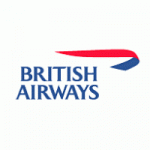
British Airways is a premium segment airline and accordingly British Airways business strategy can be specified as service differentiation. The airline aims to generate a return on capital of a minimum 15 per cent with an operating profit margin of 12 – 15 per cent.[1] British Airways business strategy focused on service differentiation is planned to be continued in the following directions[2]: Replacement or refurbishment of 99 per cent of wide-body aircraft by 2020 Improvement of in-flight entertainment in-seat power and the rollout of on-board WIFI Further investments in digital technologies to provide personalised, seamless service British Airways business strategy also relies in international market expansion strategy in an aggressive manner. In 2016 alone the airline company is expected to fly to more than a dozen new routes, including Biarritz in France, Mahon in Menorca and Palermo in Sicily. The airline also announced additional services from Heathrow and Gatwick to Krakow in Poland, Stockholm in Sweden, Split in Croatia, Berlin in Germany, Olbia in Sardinia and Gibraltar. British Airways competitive advantage is based on the following points: The highest standards of service with a focus on service personalization. The variety of choice is another important aspect of British Airways competitive advantage. For example, in the World Traveller cabin, customers can choose from a wide range of Taste of the Far East’, ‘Gourmet Dining’, ‘Taste of Britain’, ‘Great British Breakfast’, ‘Healthy Choice’ and ‘Vegetarian Kitchen’.[3] Focus on digitalization and increasing integration of information technology into various aspects of service provision and business processes. British Airways Report contains more detailed discussion of British Airways business strategy. The report also illustrates the application of the major analytical strategic frameworks in business studies such as SWOT, PESTEL, Porter’s Five Forces, Value Chain analysis and McKinsey 7S Model on British Airways. Moreover, the report…
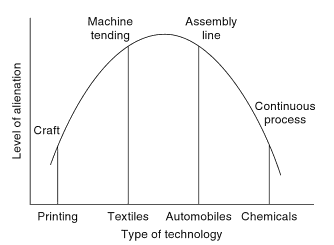
Introduction Increasing range and complexity of technological developments employed in various industries has had dramatic implications on professional and even personal lives for many employees, along with impacting organisational culture. This article aims to assess the complexity of the technology employed in the industry as the prime cause of alienation in the workplace. The article starts with discussion of Marx’s Theory of Alienation followed by Blauner’s Theory of Technology and Alienation. Moreover, the article addresses a set of other relevant theoretical frameworks and approaches such as Nichools and Beynon’s (1977) criticism of Blauner and a brief analyses of studies conducted by Gallie (1978) and Zuboff (1988). It has been stated that “in the workplace the feeling of alienation mean that the individual has lost control over the process of production” (Sharma, 1998, p.22). Generally, alienation can be defined as “the feeling of being powerless to control one’s own destiny; a worker’s feeling of powerlessness caused by inability to control the work process” (Kronblum, 2011, p.474) and alienation is justly considered as an important issue from sociological viewpoint. Marx’s Theory of Alienation in the Workplace Marx specifies four types of alienation – alienation between worker and the work, alienation between workers, alienation of worker from the product, and alienation of worker from the process of work. Famously, Marx blames capitalism for the emergence of all of above types of alienation. It has to be noted that certain aspects of Marxist ideology including Theory of Alienation has been challenged from within communists by some philosophers such as Milovan Djilas, whereas different group communist philosophers such as Louis Pierre Althusser voiced against initiatives directed towards revising theoretical foundations of Marxism (Rehmann, 2013). Assessment of the impact of technology on the emergence of each of these types of alienation increases depth of this discussion. Specifically, with…
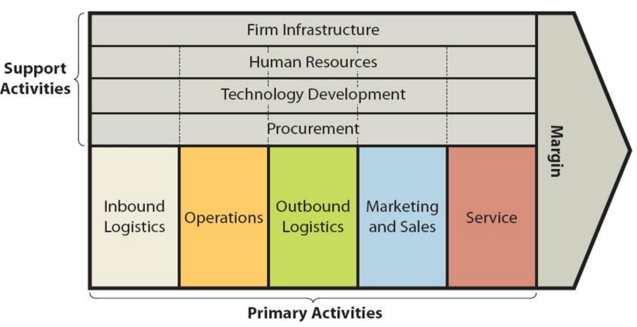
British Airways value chain analysis involves the adoption of a systematic approach in the analysis of competitive advantage. The framework makes a distinction between primary and support business activities identifies the sources of competitive advantage for each activity. The figure below illustrates the essence of value chain analysis. Primary Activities Inbound logistics British Airways inbound logistics operations are complex and involve the timely delivery of fleet of planes, catering products and a wide range of other on-board products. The necessity to ensure the freshness of foods and drinks served during the flights further complicates British Airways inbound logistics primary activities. Competitive advantage is achieved in inbound logistics stage of the business by British Airways through establishing on-going relationships with suppliers, sophisticated system for stock control and professional training that has been accredited by UK City and Guilds. Operations Generally, operations stage of the business involves preparing goods and services to be sold to customers. As the UK’s largest international scheduled airline, British Airways flies globally to more than 400 destinations. Therefore, the scope of its business operations is extensive. British Airways has a range of competitive advantages in operations part of the business through offering its customers increased security for their luggage, offering quick check-in services and also offering some services such as ticket bookings and online booking of other services. Moreover, a high level of customization of service provision and an extensive utilization of digital technologies in a wide range of business processes represent solid sources for additional value for British Airways. Outbound logistics Outbound logistics involves sending ready products to customers for consumption. Although outbound logistics mainly relate to manufacturing companies, it is also applicable towards service businesses such as airlines. British Airways flies to airports in nearly 80 countries worldwide. The airline derives value in outbound…
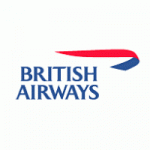
British Airways segmentation, targeting and positioning refer to ways in which the airline company identifies certain individuals among the general public to offer their service packages. Segmentation involves dividing population into groups according to certain characteristics, whereas targeting implies choosing specific groups identified as a result of segmentation to sell products. Positioning refers to the selection of the marketing mix the most suitable for the target customer segment. British Airways follows multi-segment concentration marketing strategy by offering four different service packages to different customer segments. Specifically, British Airways targets different customer segments for its four levels of services: economy, premium economy, executive and first class. The following table illustrates segmentation, targeting and positioning of each category of British Airways services: Segmentation bases Target segment Economy class Premium Economy Executive Club First Class Geographic Region Domestic flights in UK Europe and international flights Selected international flights Europe and international flights Selected international flights Density Urban & rural Urban & rural Urban Urban Demographic Age Kids, teenagers, middle-aged, old-aged Teenagers, middle-aged Middle-aged, old-aged Middle-aged, old-aged Gender Male, female Income Low Middle High High Occupation Students, salaried Students, salaried Businessmen Professionals Businessmen Professionals Education High school Bachelor’s Technical Bachelor’s Master’s Business schools Master’s Business schools Social status Low, middle Low, middle High High Family size Joint families Nuclear families Nuclear families Newly married Psychographic Lifestyle Moderate-orientated Moderate-orientated Achievement-oriented Achievement-oriented Personality Easygoing Easygoing Determined Ambitious Behavioural Occasions Regular travel Vacations Business trips Honeymoon Business trips Benefits sought Affordability Value Luxury Convenience Luxury User status Regular traveller Regular traveller First timer, Regular traveller First timer, Regular traveller Attitude Indifferent Indifferent positive Positive enthusiastic Enthusiastic Travel and tourism industry base Customer expectations Low Medium High High Customer image Neutral Neutral to positive Positive…

British Airways (BA) is the largest airline company in the UK and it flies globally to more than 400 destinations to airports in nearly 80 countries. British Airways is a part of International Airline Group (IAG) that also owns three other airline brands – Aer Lingus, Iberia and Vueling. The Group also owns 13.55 per cent of the equity of IB OpCo Holding S.L. (“Iberia”) and 86.26 per cent of the equity of Avios Group (AGL) Limited (“AGL”). IAG made a record profit of GBP 1,264 million in 2015. By the end of 2015, British Airways had 39,304 employees globally (Annual Report, 2015). British Airways pursues service differentiation business strategy and differentiates its services via an extensive reliance on digitalization and information technology and high level of customization of service provision. These points represent solid sources of British Airways’ competitive advantage. Major weaknesses related to British Airways include an overdependence on the UK market and low profitability of business operations. At the same time, the airline is presented with the opportunities of forming strategic cooperation with other businesses in airline and catering industries, further engaging in international market expansion and benefiting from synergy via closer integration between IAG’s operating airlines. British Airways Report contains the application of the major analytical strategic frameworks in business studies such as SWOT, PESTEL, Porter’s Five Forces, Value Chain analysis and McKinsey 7S Model on British Airways. Moreover, the report contains analyses of British Airways’ business strategy, leadership and organizational structure and its marketing strategy. The report also discusses the issues of corporate social responsibility. 1. Introduction 2. Business Strategy 3. Leadership 4. Organizational Structure 5. SWOT Analysis 5.1 Strengths 5.2 Weaknesses 5.3 Opportunities 5.4 Threats 6. PESTEL Analysis 6.1 Political Factors 6.2 Economic Factors 6.3 Social Factors 6.4 Technological Factors 6.5 Environmental Factors 6.6…
